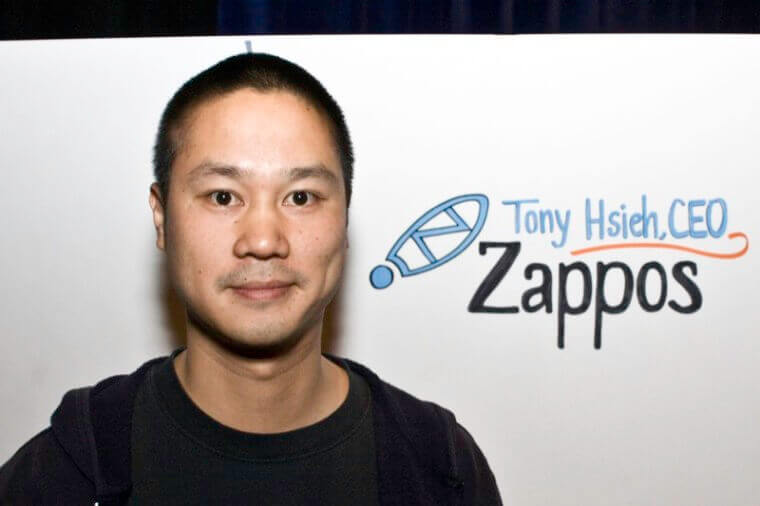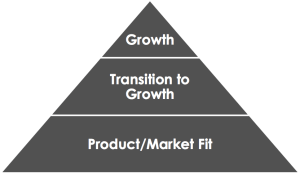How Palantir's Business Model Built A $15 Billion Growth Engine
Table of contents
- So what exactly does Palantir do?
- Find something that’s broken
- Narrow your initial target
- Build a product that works
- Hire humble, brilliant people
- Make sure your product can stand on its own
- Cultivate authentic word of mouth
- Look for different people with the same problems
- Be proactive about PR problems
- Looking Forward
[This is the first in a series of articles exploring the driving factors of high-growth companies. Palantir in particular is interesting because of their B2B business model and their lack of traditional marketing or sales teams1.]
They helped convict Bernie Madoff 2, analyzed roadside bomb patterns in Afganistan, and are rumored to have helped locate Osama bin Laden3. They’ve worked with the FBI, CIA, Marine Corps, Air Force, and at least 8 other government organizations4.
With that sort of pedigree, you’d think Palantir was some sort of top-secret government program. It’s not. Complete with free meals and gym memberships, Palantir is actually one of the most successful privately-held startups in Silicon Valley. Started by a group of former PayPal people about a decade ago, Palantir is now worth $15 billion5.
So what exactly does Palantir do?
Despite their unusual applications, Palantir’s actually very similar to many other successful startups at the core. They focused on one core product - machine augmented6 data analysis - and built an almost-exclusively engineering team to make it happen.
Within the realm of data analysis, Palantir solved a few problems that have been holding analysts back for decades: 
Problem: SQL has a frustrating learning curve. It’s just hard enough that mostly only analysts know how to use it today.
Solution: Palantir’s data analysis runs on natural language querying, so ordinary people can easily use it7. This has opened up huge opportunities to get more eyes on important data.
Problem: Data is scattered everywhere. For instance, if the FBI had a case file on someone, there’d be a good chance the CIA wouldn’t even know about it. Similarly officers in LAPD would have to search one database for robberies but run a different search to check for murders.
Solution: Through talking with potential users, Palantir realized that most data is fragmented and much of it is also unstructured. So they built their tools to combine multiple unstructured sources 8 9
Problem: Queries are slow. Even as the computing industry has kept pace with Moore’s Law, speed is still an issue for data heavy tasks like analysis. When you have a small database of 10k rows, you can run a query pretty quickly, but once you’re handling many gigabytes of information, you might easily wait half an hour for the results… if the results don’t timeout or hit memory problems.
Solution: Palantir optimized for speed both in run time and in iteration.
Find something that’s broken
When we look back at PayPal’s growth in the early 2000s, it’s easy to point to marketing efforts like their referral bonuses (which drove 7-10% daily growth). While marketing drove tremendous growth, but the company still nearly died from a new and frightening problem - cyber fraud lead mostly by the Russian Mafia10.
To combat this problem, PayPal devised a system of analysts and analysis software that identified and stopped fraud. They called it Igor after one of the fake names used by a fraudulent account. This machine augmented intelligence approach (machines helping humans) worked better than the more popular artificial intelligence approach and turned out to be key to stopping adaptive cyber criminals11.

After PayPal sold to eBay in 2002, former employees (the “PayPal Mafia”) started founding other companies including Tesla, LinkedIn, YouTube, Yelp, and Palantir.
Remembering how critical the Igor system had been to stopping fraud at PayPal, a few people started wondering how that data analysis problem could be solved at a larger scale for other groups.
So in 2004, five people (including four from PayPal) got together to start Palantir with the goal of providing better data analysis. 12 In the words of their soon-to-be first investor, “The most impressive thing about the team was how focused they were on the problem … how humans would talk with data.” 13
Growth Principle #1: Before writing even the first line of code, identifying a critical problem to solve. (tweet this)
In the language of growth hacking, Palantir set out to become a pain killer, not a vitamin.
Narrow your initial target
Even with their clear focus on a product goal, Palantir still had a few issues to overcome. For one, working with enterprise bueinesses can be bureaucratic and slow - often including special challenges like outdated tech or special security needs. Also important, Palantir didn’t really have a working product yet (that ultimately took three years with a full staff of engineers). And to cap it all off, in the pre-Salesforce/Box/Zenefits world VCs were afraid to invest in enterprise startups. 14
To get their initial foothold and overcome these challenges, Palantir decided to focus on the intelligence community. Like Facebook (launched to Harvard students) and Uber (launched with town cars in San Francisco) before them, Palantir focused on a hyper niche where they could gain some traction before expanding to a wider audience. 
This paid off well in 2005 when the CIA became a Palantir customer 15 and the CIA’s venture capital arm, In-Q-Tel, became an early investor. 16
Growth Principle #2: Modern marketing is about reaching the right people at the right time, not spamming everyone. (tweet this)
Build a product that works
 With an opportunity to actually get their product in the field at the CIA, Palantir focused on rapidly building and improving their analysis software. For nearly three years, Palantir engineers would fly out to Washington DC every two weeks and talk with the analysts using the software.
With an opportunity to actually get their product in the field at the CIA, Palantir focused on rapidly building and improving their analysis software. For nearly three years, Palantir engineers would fly out to Washington DC every two weeks and talk with the analysts using the software.
This period of fast iteration wasn’t just about fixing bugs; they actually made significant breakthroughs that today form some of their key competitive advantages. For instance, the first iteration of Palantir focused just on structured data. Through talking with potential users though, Palantir quickly realized that most of the data available for analysis was unstructured (think field reports rather than spreadsheets). 17 Handling unstructured data is one of their core competencies today.
In the startup community, we love talking about the importance of fast iteration, but that’s easy to do when pushing code live is as simple as hitting refresh on a server. In the enterprise world, computers are often not connected to the internet, so pushing code live means an engineer has to fly to the company’s physical location and upgrade the software in-person. The way that Palantir made fast iteration a priority despite the extra challenges helped it to develop a battle-tested, world-class tool in just a few busy years.
Growth Principle #3: The best marketing hack is building a product that just works every time. (tweet this)
Hire humble, brilliant people
Just as having the right coworkers is critical to happiness at work18, the first couple hundred hires at a new company often dictate success or failure. For instance, Tony Hsieh takes hiring at Zappos so seriously that they actually offer new employees $4k to quit during training. It’s expensive, but saves money and builds culture in the long-run.19 
When Palantir first started growing, they built a core team of about twenty people who were completely dedicated to the vision. As cofounder Joe Lonsdale put it, they needed employees who “would rather be employees at this company than founders at a different company because the mission is that important and interesting.”20
The hiring process was equal parts talent and culture. Particularly on the engineering side, talent is a great rational measure (“can you write a program in C+ to do x?”), but assessing someone for culture fit is always a bit more tentative. In Palantir’s case, they settled for a single measure that factored in all cultural elements: “is this a person you’d like to work with?”21
Growth Principle #4: Hire brilliant people that you want to work with every day. (tweet this)
Make sure your product can stand on its own
After years of iterating quickly and continually improving the product, Palantir reached what we might call product-market fit in 2008. From what I can tell, most of this 3-4 year time period was spent working with just one client (the CIA). In pre-product market-fit stage it’s tempting to want to start “proving the growth engines”, but the reality is that until you have a working product, adding new customers today just means burning potential customers tomorrow. Palantir had the patience and the drive to focus solely on the product without getting antsy about finding new customers. 
Product-market fit is a tricky thing to measure. You can use Sean Ellis’ 40% rule of thumb (source of the image to the right), but that’s more applicable to b2c companies than to a b2b company like Palantir. Instead, as co-founder Alex Karp put it, “The real proof was, we saw massive adoption without a sales force… one person would email another…” 22
By waiting until the product could speak for itself instead of glossing it over with shiny brochures or smooth-talking sales people, Palantir took a healthy long-term approach to growth.
Growth Principle #5: As much as possible, focus solely on building a better product until your target customers become raving fans. (tweet this)
Cultivate authentic word of mouth
As far as traditional “marketing” levers are concerned, Palantir really only used one: word of mouth. And this isn’t the result of some viral loop like the one that makes you invite your friends before proceeding to the next level of a gaming app. Palantir connected with the true spirit of virality: they built such an epic product that people - company executives even - wanted to tell their friends about this next great thing.
Palantir first focused on a great product and then let happy customers do the speaking. This is the true power of word of mouth.
In the world of marketing we really only have two options:
In option one, we build a funnel to educate and convert the user. We do our best to convince them, but each new user we attract though ads, partnerships, contents, or whatever else arrives at the top of the funnel knowing nothing about our product. 
In option two, a current happy user tells their friends how amazing our product is. Now new users arrives at the top of the funnel excited and optimistic.
You can force virality to some degree, but you cannot force authentic word of mouth. This marketing tactic is less about adding a “tell a friend” promo to your product and more about getting the core product experience right. (though if you have the right experience, an occasional prompt doesn’t hurt)
Growth Principle #6: Real viral loops are about epic products first and sharing prompts second. (tweet this)
Look for different people with the same problems
As a growth community, we’ve put a lot of thought into conversion rates - click through rate, exposure rate, app download rate, trial upgrade rate, churn rate - but sometimes a more effective growth strategy is simply increasing the playing field. Breaking the rules of the game and increasing the total addressable market (MBAs call this Blue Ocean Strategy).
That’s what Palantir did when they expanded to the civilian market. After investing years of thought and programming into Palantir Gotham (the government product), Palantir realized that many of the same core competencies - handling unstructured data, combining multiple data sets, querying speed - could be used to great effect in the business world.23 
In 2010, Palantir landed its first business client when the New York Police Department referred them to JPMorgan24. Palantir helped with everything from untangling complicated foreclosure problems to fighting electronic attacks on the bank - this time from Chinese hackers instead of Russian mafia.25
As of 2013, just three years after making the leap, somewhere around 60% of Palantir’s revenue came from the private sector26. That has to make this tactic one of the most effective Palantir has used to date.
Growth Principle #7: Once you’re reached product/market fit, look for other audiences with similar problems. (tweet this)
Be proactive about PR problems
Palantir’s founders are not oblivious to the minefield they’re trying to tiptoe through by improving security while maintaining freedom. Protecting civil liberties and privacy have been a core part of their goal 27 since the very beginning when Peter Thiel defined the problem as, “needing to reduce terrorism while preserving civil liberties”28. 
And they’ve gone beyond simple words to actually put actions behind these goals. From encryption and multi-level permissions keeping the bad guys out to audit trails and anonymization keeping the good guys good29, Palantir works to protect freedom. They even have created an entire job class dedicated to this: Privacy & Civil Liberties Engineers30.
Of course, they haven’t been without issues. Some have questioned the fundamental structure of Palantir’s safeguards. If a tree falls in a forest and no one is around to hear it, does it make a sound? Similarly, if an audit log is saved to a server and no one ever reads it, does it protect liberty? CEO Karp suggests out that these logs are meant to be read by a third-party, but any legal requirement for third-party review is purely theoretical in the present time31.
More frighteningly, a Palantir employee took part in the infamous HBGary proposal to launch cyber attacks and misinformation campaigns against Wikileaks32. Upon learning of this major issue, Palantir quickly apologized, stated that this proposal ran counter to the company mission, and put the employee responsible on leave. After a review process involving an outside law firm, Palantir rehired that employee and launched an internal ethics hotline.33
Growth Principle #8: The key to “good PR” is building a genuine culture and fixing things quickly when you mess up. (tweet this)
Looking Forward
While much of the startup world remains focused on the fairly saturated consumer world, Palantir is making inroads on two industries that are becoming more tech friendly yet still have lots of room for growth: Business and Security34. This combined with Palantir’s well-earned reputation point to a golden road toward the future.
On the flip side, privacy will only become a bigger issue in the coming years, and even with a good start Palantir has it’s work cut out to avoid becoming Big Brother. Also, although they made an estimated $1 billion in 2014, Palantir has yet to make a profit35. Of course, this is partially due to reinvestment36, so it’s more of a calculated risk than an emperor-has-no-clothes problem.
-
Leaked Palantir Doc Reveals Uses, Specific Functions And Key Clients ↩︎
-
How A ‘Deviant’ Philosopher Built Palantir, A CIA-Funded Data-Mining Juggernaut ↩︎
-
Leaked Palantir Doc Reveals Uses, Specific Functions And Key Clients ↩︎
-
Leaked Palantir Doc Reveals Uses, Specific Functions And Key Clients ↩︎
-
Leslie Walker’s Interview With PayPal.com CEO Peter Thiel ↩︎
-
How A ‘Deviant’ Philosopher Built Palantir, A CIA-Funded Data-Mining Juggernaut ↩︎
-
60 Percent of Workers Say Relationship with Employer Positively Impacts Focus and Productivity, Virgin Pulse Survey Finds ↩︎
-
How Joe Lonsdale, Co-Founder of Billion-Dollar Palantir, Built His Winning Team ↩︎
-
Image credit: William Hoiles ↩︎
-
How A ‘Deviant’ Philosopher Built Palantir, A CIA-Funded Data-Mining Juggernaut ↩︎
-
How A ‘Deviant’ Philosopher Built Palantir, A CIA-Funded Data-Mining Juggernaut ↩︎
-
How A ‘Deviant’ Philosopher Built Palantir, A CIA-Funded Data-Mining Juggernaut ↩︎
-
Did Security Firms Pitch Bank Of America On Sabotaging WikiLeaks? ↩︎
-
Billion Dollar Unicorns: Palantir’s Skyrocketing Valuation May Be Justified ↩︎